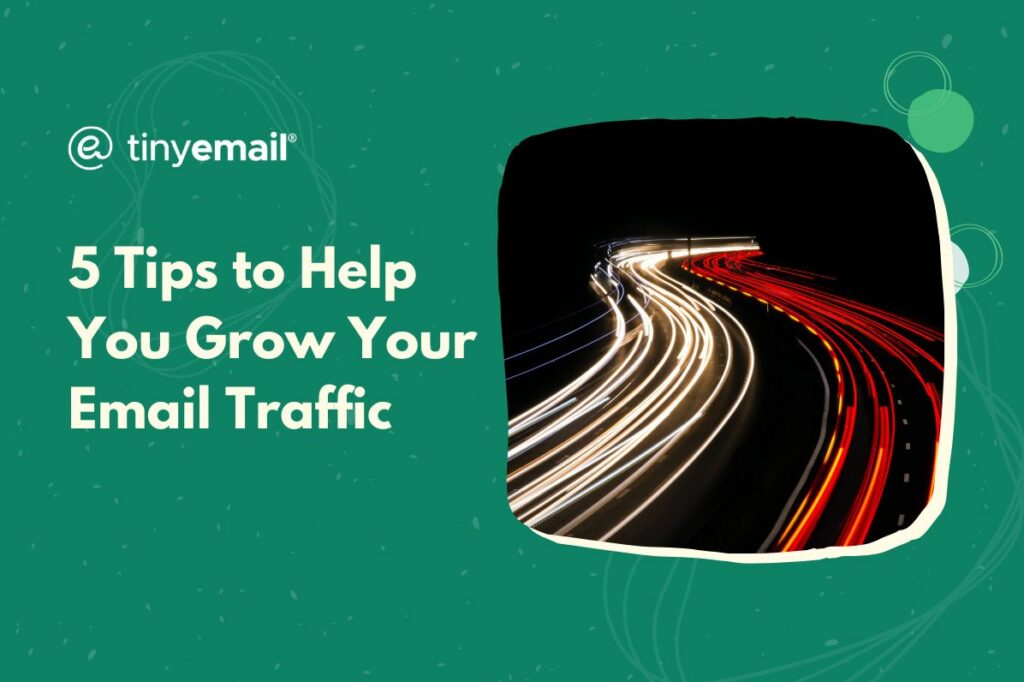Email traffic refers to the volume of emails that are being sent and received by an individual, organization, or network. It is a measure of the amount of email activity that is taking place and can be influenced by various factors, such as the size of the organization, the nature of the business, and the communication preferences of employees or customers.
How to Measure Email Traffic
Email traffic can be tracked and analyzed using various metrics, such as the number of emails sent and received per day, the number of email threads or conversations, the average response time, and the percentage of emails that are opened, read, or replied to.
This information can be useful for businesses who want to manage their email communication more efficiently and effectively, identify areas for improvement, and ensure that important messages are not lost or overlooked in the midst of a large volume of email traffic.
There are several ways to measure email traffic, including:
- Counting the number of emails sent and received: This is a basic method of measuring email traffic, which involves tracking the total number of emails that are sent and received over a given period of time.
- Tracking the number of email threads or conversations: This involves counting the number of email exchanges or threads that occur over a period of time, which can provide a more accurate picture of email activity than just counting the number of individual emails.
- Analyzing email server logs: This involves analyzing the server logs of an email system to track the volume of email traffic and other metrics such as email size, attachment types, and delivery status.
- Using email analytics software: There are several email analytics tools available that can track email traffic and provide detailed reports on metrics such as email volume, response times, and engagement rates.
- Surveying employees or customers: Another approach is to conduct surveys of employees or customers to understand their email usage patterns and preferences, which can help organizations tailor their email communication strategies to meet their needs.
Best Tools to Measure Email Traffic
There are several tools available that can be used to measure email traffic, such as:
- Google Analytics: This tool can be used to track email campaigns and measure email traffic to a website. It provides metrics such as click-through rates, bounce rates, and conversion rates.
- tinyEmail: A great email marketing platform that provides analytics on email campaigns, including open rates, click rates, and conversion rates.
- Mailchimp: This is also an email marketing platform that provides analytics on email campaigns, including open rates, click rates, and unsubscribe rates.
- HubSpot: This platform provides email marketing analytics and can track email campaigns, open rates, click rates, and other engagement metrics.
- Microsoft Exchange Server: This email server platform provides built-in email traffic analytics, including email volume, message size, and server performance metrics.
- Google Workspace: This suite of productivity tools includes Gmail, which provides analytics on email usage and traffic, including email volume, response times, and email storage usage.
- Mixmax: This email tracking tool provides analytics on email opens, clicks, and replies. It can also integrate with other tools such as Salesforce and HubSpot.
- Campaign Monitor: This email marketing platform provides analytics on email campaigns, including open rates, click rates, and conversion rates.
How to Increase Email Traffic
There are several strategies that can be used to increase email traffic, including:
Build a quality email list
A high-quality email list is essential to increasing email traffic. Make sure that you are only sending emails to people who have given you explicit permission to do so and are genuinely interested in your content.
Personalize your emails
Personalizing emails with the recipient’s name or other relevant details can help increase engagement and response rates.
Optimize your email subject lines
The subject line is the first thing that people see when they receive your email. A clear and concise subject line that communicates the value of your email content can help increase open rates.
Use a clear and compelling call-to-action (CTA)
A clear and compelling CTA can help encourage recipients to take the desired action, whether it’s clicking through to a website, making a purchase, or filling out a survey.
Send emails at the right time
Timing can have a significant impact on email open rates and response rates. Experiment with different send times to see what works best for your audience.
Use engaging content
The content of your email should be informative, engaging, and relevant to your audience. Use images, videos, and other multimedia content to make your emails more engaging.
Segment your email list
Segmenting your email list based on demographics, interests, or behavior can help you send more targeted and personalized emails, which can increase engagement and response rates.
Test and optimize
Continuously testing and optimizing your email campaigns can help you identify what works best for your audience and improve your email traffic over time.


